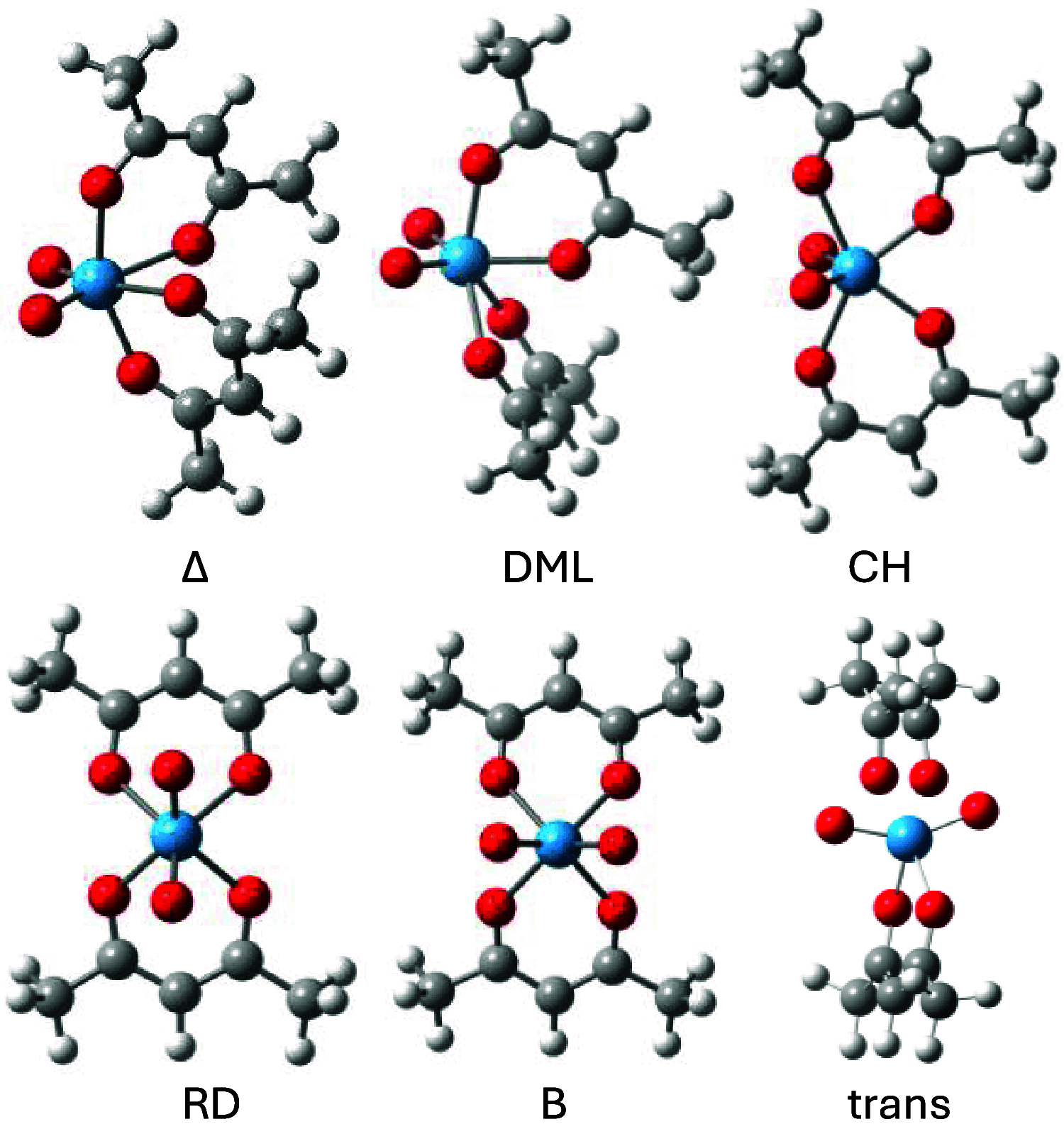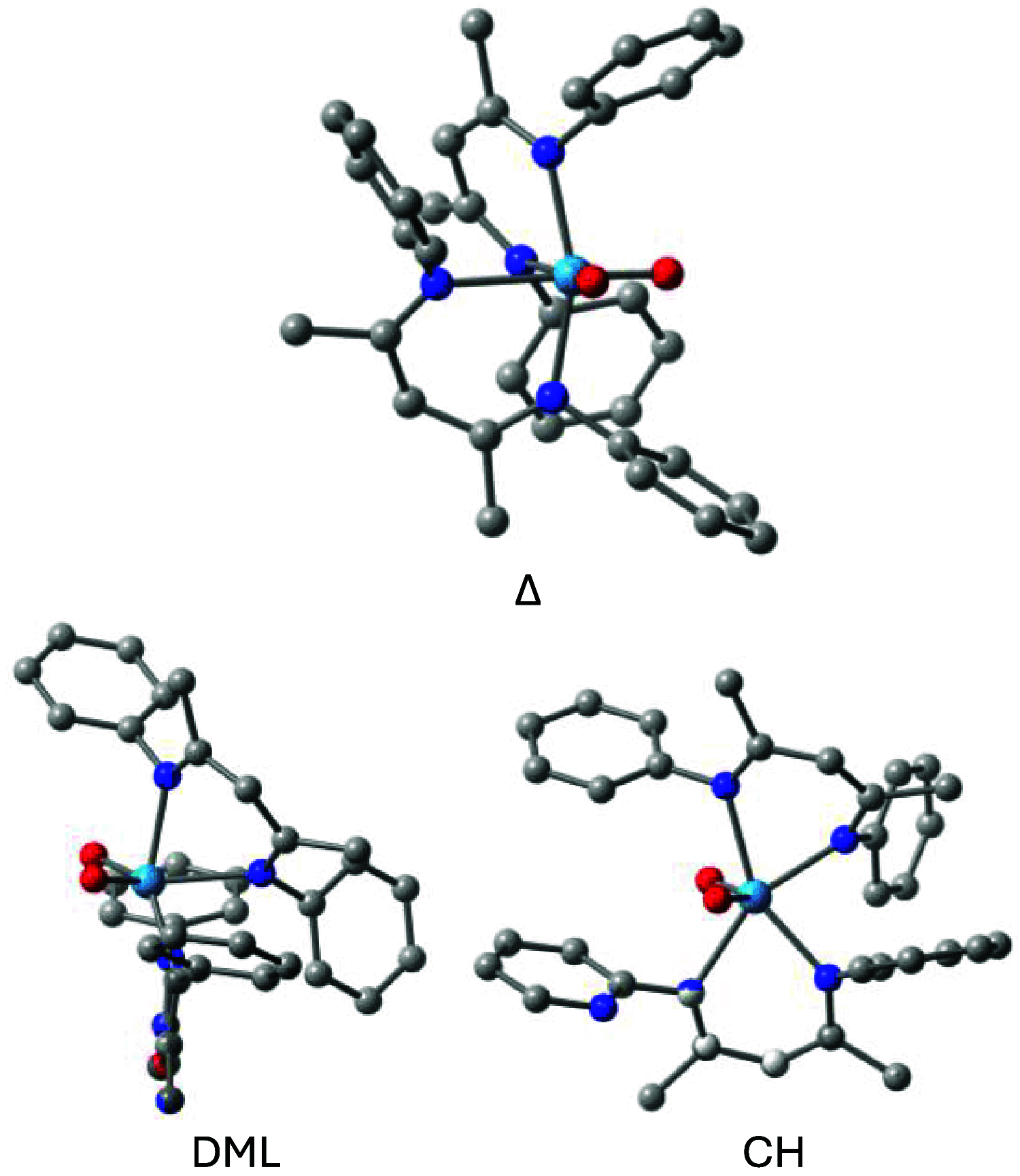Chiral-at-Tungsten Dioxo Complexes─A Computational Study on Inhibiting Racemization
- PMID: 40439251
- PMCID: PMC12264964
- DOI: 10.1021/acs.inorgchem.5c01280
Chiral-at-Tungsten Dioxo Complexes─A Computational Study on Inhibiting Racemization
Abstract
Chiral cis-WO2(acac)2 and cis-WO2(nacnac)2 complexes racemize via four pathways according to DFT calculations at ωB97X-D/6-311+G(2d,f) with LANL2DZ for W and with inclusion of acetonitrile solvent. Steric congestion by N-Me and N-Ph substitution of the two nacnac ligands has a substantial geometrical impact and raises the barriers for all pathways. Despite this, even all N-Me and all N-Ph substituted derivatives of cis-WO2(nacnac)2 have the same four channels for racemization. For each of these complexes, the Dhimba-Muller-Lammertsma (DML) twist is preferred over the Conte-Hippler (CH) twist and significantly favored over the established Bailar (B) and Ray-Dutt (RD) twists. The favored DML barrier for WO2(nacnac)2Ph4 has a large estimated ΔG barrier of 25.7 kcal/mol, suggesting it to be a viable chiral-at-tungsten complex for asymmetric catalysis.
Figures







Similar articles
-
Racemization Pathway for MoO2(acac)2 Favored over Ray-Dutt, Bailar, and Conte-Hippler Twists.Inorg Chem. 2022 Sep 26;61(38):14918-14923. doi: 10.1021/acs.inorgchem.2c00824. Epub 2022 Aug 18. Inorg Chem. 2022. PMID: 35980189 Free PMC article.
-
Chiral-at-Metal Racemization Unraveled for MX2 (a-chel)2 by means of a Computational Analysis of MoO2 (acnac)2.Chemistry. 2023 Nov 24;29(66):e202302516. doi: 10.1002/chem.202302516. Epub 2023 Oct 30. Chemistry. 2023. PMID: 37730887
-
The Black Book of Psychotropic Dosing and Monitoring.Psychopharmacol Bull. 2024 Jul 8;54(3):8-59. Psychopharmacol Bull. 2024. PMID: 38993656 Free PMC article. Review.
-
Systemic pharmacological treatments for chronic plaque psoriasis: a network meta-analysis.Cochrane Database Syst Rev. 2021 Apr 19;4(4):CD011535. doi: 10.1002/14651858.CD011535.pub4. Cochrane Database Syst Rev. 2021. Update in: Cochrane Database Syst Rev. 2022 May 23;5:CD011535. doi: 10.1002/14651858.CD011535.pub5. PMID: 33871055 Free PMC article. Updated.
-
Systemic pharmacological treatments for chronic plaque psoriasis: a network meta-analysis.Cochrane Database Syst Rev. 2017 Dec 22;12(12):CD011535. doi: 10.1002/14651858.CD011535.pub2. Cochrane Database Syst Rev. 2017. Update in: Cochrane Database Syst Rev. 2020 Jan 9;1:CD011535. doi: 10.1002/14651858.CD011535.pub3. PMID: 29271481 Free PMC article. Updated.
References
-
- Wang M. Y., Li W.. Feng Ligand: Privileged Chiral Ligand in Asymmetric Catalysis. Chin. J. Chem. 2021;39:969–984. doi: 10.1002/cjoc.202000508. - DOI
LinkOut - more resources
Full Text Sources
Miscellaneous

